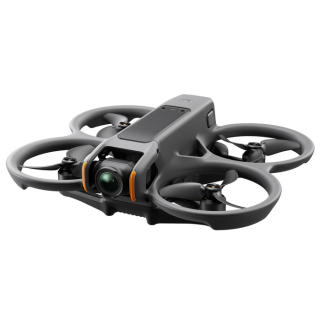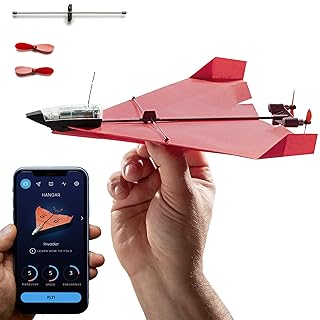 How to update ExpressLRS transmitter firmware
How to update ExpressLRS transmitter firmware
ExpressLRS is a protocol under development, so it is being upgraded frequently.
Here, we will show you how to update the firmware of the Express LRS transmitter.
- Basics of update method
- ELRS Lua script version upgrade
- Updating from version 2.x to 3.x: Resolving Bad Size Given error
- Via USB: CP210x driver installation
- Via USB: Connect transmitter to your computer
- Via USB: Build and update transmitter firmware
- Via WiFi: Build transmitter firmware
- Via WiFi: Switch transmitter to WiFi mode
- Via WiFi: Connect your computer to transmitter
- Via WiFi: Update transmitter firmware
Basics of update method
Update is done using ExpressLRS Configurator installed on your computer. There are two ways to update, one is to use a USB cable (UART) and the other is to use Wifi.When using USB cable, transmitter will connect to COM port on your computer. Building the firmware with ExpressLRS Configurator will continue to update transmitter.
When using Wifi, transmitter acts as an Wifi access point. After building the firmware with ExpressLRS Configurator, put the transmitter in Wifi mode and connect it to your computer. Then upload the firmware to the transmitter and update it. However, some products may not have Wifi function. In that case, update with a USB cable.
You can update firmware as many times as you like. For example, you can write same version of firmware multiple times to change "Binding Phrase".
The major version (first number) of transmitter and receiver (drone) must match. When upgrading your transmitter, make sure that the same version can be used for your receiver to be used. However, the minor version (second number) and patch version (third number) do not have to match.
ELRS Lua script version upgrade
Even in the case of a minor version upgrade, the ELRS Lua script may also be updated as the ELRS version is updated. When updating the transmitter firmware, be sure to download the latest version of the ELRS Lua script.Updating from version 2.x to 3.x: Resolving Bad Size Given error
Depending on your transmitter model, you may see a "Bad Size Given" error when updating from version 2.x to 3.x. The solution is to install a special firmware repartitioner to resize the transmitter's storage partitions and then install version 3.x firmware.This step is only required when updating over Wi-Fi. Not required if via USB(UART).
- Upgrade the transmitter firmware to version 2.5.1 or later.
- Install by dragging and dropping repartitioner.bin onto the browser screen of the transmitter via Wi-Fi. If you get a "Target Mismatch" error during installation, click "Flash Anyway" to install.
- After the transmitter restarts several times, it will switch to Wi-Fi mode.
- Install version 3.x firmware by dragging and dropping it onto the browser screen of the transmitter via Wi-Fi.

If there is a note like the one shown on the right on the transmitter model name screen, you need to install the repartitioner.
Via USB: CP210x driver installation
Before connecting ELRS transmitter to your computer, first install USB-UART bridge driver on your computer. Opens Silicon Laboratories
CP210x Driver
page.
Then click "DOWNLOADS" menu.
Opens Silicon Laboratories
CP210x Driver
page.
Then click "DOWNLOADS" menu.
 For Windows, right-click "CP210x Windows Drivers" and select a menu item such as "Save link as".
Then you will get a file with a file name such as "CP210x_Windows_Drivers.zip", so unzip it in any folder.
For Windows, right-click "CP210x Windows Drivers" and select a menu item such as "Save link as".
Then you will get a file with a file name such as "CP210x_Windows_Drivers.zip", so unzip it in any folder.
 When unzipped, files like these will appear.
If you are using 64-bit Windows, click "CP210xVCPInstaller_x64.exe".
If you are using 32-bit Windows, click "CP210xVCPInstaller_x86.exe".
When unzipped, files like these will appear.
If you are using 64-bit Windows, click "CP210xVCPInstaller_x64.exe".
If you are using 32-bit Windows, click "CP210xVCPInstaller_x86.exe".
 The driver installer will start. Click Next.
The driver installer will start. Click Next.
 The license agreement confirmation screen is displayed.
After confirming the contents, check "I agree" and click "Next".
The license agreement confirmation screen is displayed.
After confirming the contents, check "I agree" and click "Next".
 Installation is completed in an instant.
Click Finish.
Installation is completed in an instant.
Click Finish.
Via USB: Connect transmitter to your computer
 Connect antenna to the transmitter, turn on radio and connect ELRS transmitter to your computer with a USB cable.
Select MODEL with "CRSF" specified as the communication protocol in OpenTX/EdgeTX to start ELRS transmitter.
Connect antenna to the transmitter, turn on radio and connect ELRS transmitter to your computer with a USB cable.
Select MODEL with "CRSF" specified as the communication protocol in OpenTX/EdgeTX to start ELRS transmitter.
However, for products that require DIP switch switching when rewriting the firmware, use the method of updating by ELRS transmitter itself below.
 If your ELRS transmitter has a power connector, you can also update the transmitter alone.
If your ELRS transmitter has a power connector, you can also update the transmitter alone.
If the transmitter has a DIP switch, switch it appropriately. Connect antenna to the transmitter, then connect power supply that matches the specifications to the transmitter, and start up. It is recommended to use a 2S LiPo battery for power supply. 3S battery cannot be used because the voltage is too high.
Then connect it to your computer with a USB cable.
Transmitter will switch to WiFi mode if left alone for about 60 seconds (time depends on the firmware settings). The display shows SSID (ExpressLRS TX), password (expresslrs), and IP address (10.0.0.1). Even if the transmitter is in WiFi mode, it is possible to update the firmware via USB connection.
 Open Windows Device Manager screen.
Open Windows Device Manager screen.
If you see "Silicon Labs CP210x USB to UART Bridge" here, the connection is successful.
Open [Start]-[All apps]-[Windous Tools(Win11) / Windows management tools (Win10)] and double-click "Computer Management". Then click "Device Manager" from the left menu.
Or open [Start]-[Windows System Tools]-[Control Panel] and select [System and Security]-[System]-[Device Manager].
Via USB: Build and update transmitter firmware
ExpressLRS Configurator is used to build and update the firmware. In addition, such as Start ExpressLRS Configurator and select "Configurator" from the left menu and "OFFICIAL RELEASES" from the Top menu.
Start ExpressLRS Configurator and select "Configurator" from the left menu and "OFFICIAL RELEASES" from the Top menu.
In "Releases" field, select the firmware version to install. The latest version is selected as the initial value.
In "Device category" and "Device" fields, select the target device. For transmitters, device name should contain "TX".
In "Flashing Method" field, specify how to write the firmware. Select "UART" when using USB.
If you click the "DOWNLOAD LUA SCRIPT" button displayed here, you can download ELRS Lua script to be stored in your radio.
If you don't know the device name to select, try accessing transmitter from your computer with in WiFi mode. Then you can see target device name and current ELRS version. For more information, see Via WiFi: Connect your computer to transmitter . However, some transmitters do not have WiFi mode.
 You can select options by scrolling the screen.
You can select options by scrolling the screen.
Regulatory domains
Select "EU_CE_2400" when using 2.4GHz band in the EU area, and select "ISM_2400" when using it outside the EU area.
Binding phrase setup
Where "Custom binding phrase" is written, specify "Binding Phrase", which is the "watchword" used to bind transmitter and receiver. If you set the same phrase for both transmitter and receiver, it will be automatically bound just by turning on the power. If you uncheck "BINDING_PHRASE", you can bind manually without using "Binding Phrase".
Network
In the "AUTO_WIFI_ON_INTERVAL" field, you can specify the time from power on to switching to Wi-Fi mode. The unit is seconds, and the initial value is 60 seconds.
You can read more about other options on the following pages of the ExpressLRS official site.
 After selecting options, scroll screen and click "FLASH" button.
After selecting options, scroll screen and click "FLASH" button.
 Then the firmware source code will be downloaded, build and write to the transmitter will start.
It will take a few minutes to a dozen minutes to complete.
Then the firmware source code will be downloaded, build and write to the transmitter will start.
It will take a few minutes to a dozen minutes to complete.
 If the writing is successful, "Success!" Will be displayed on a green background as shown in this figure.
Power OFF -> ON the transmitter (radio) and restart.
If the writing is successful, "Success!" Will be displayed on a green background as shown in this figure.
Power OFF -> ON the transmitter (radio) and restart.
And now the firmware update is complete.
 If the process fails, you will see an error message on a red background like this.
Look at the place where "Error:" is written to find out the cause of the error.
In example in this figure, "specify 'upload_port'" is displayed, so I thought ELRS transmitter was not visible from computer.
The problem was solved by firmly inserting USB cable.
If the process fails, you will see an error message on a red background like this.
Look at the place where "Error:" is written to find out the cause of the error.
In example in this figure, "specify 'upload_port'" is displayed, so I thought ELRS transmitter was not visible from computer.
The problem was solved by firmly inserting USB cable.
Click "BACK" button on this screen to start build again.
Via WiFi: Build transmitter firmware
Build transmitter firmware using ExpressLRS Configurator on your computer in the same way as the procedure via USB . Start ExpressLRS Configurator and select "Configurator" from the left menu and "OFFICIAL RELEASES" from the Top menu.
Start ExpressLRS Configurator and select "Configurator" from the left menu and "OFFICIAL RELEASES" from the Top menu.
In "Releases" field, select the firmware version to install. The latest version is selected as the initial value.
In "Device category" and "Device" fields, select the target device. For transmitters, device name should contain "TX".
In "Flashing Method" field, specify how to write the firmware. Select "WiFi" when using WiFi.
Also, specify the options in the same way as for the procedure via USB .
If you click the "DOWNLOAD LUA SCRIPT" button displayed here, you can download ELRS Lua script to be stored in your radio.
If you don't know the device name to select, try accessing transmitter from your computer with in WiFi mode. Then you can see target device name and current ELRS version. For more information, see Via WiFi: Connect your computer to transmitter . However, some transmitters do not have WiFi mode.
 After selecting options, scroll screen and click "BUILD" button.
After selecting options, scroll screen and click "BUILD" button.
If you have written firmware with the options "HOME_WIFI_SSID" and "HOME_WIFI_PASSWORD" in the past, the transmitter will be connected to your home LAN when it goes into WiFi mode. In this case, you can click "BUILD & FLASH" button to build and write the firmware at once.
 If the build is successful, you will see "Success!" on a green background, as shown in this figure.
If the build is successful, you will see "Success!" on a green background, as shown in this figure.
 Then Explorer will start and the folder containing completed firmware binary file will open.
A file called "firmware.bin" is stored here.
Then Explorer will start and the folder containing completed firmware binary file will open.
A file called "firmware.bin" is stored here.
Leave this explorer screen unclosed for later writing to the transmitter. The firmware storage folder will be created under "C:\Users\[Username]\AppData\Local\Temp".
Via WiFi: Switch transmitter to WiFi mode
 Launch "Express LRS" Lua script from "TOOLS" screen of "RADIO (SYSTEM) menu" of the radio,
and select [WiFi Connectivity]-[Enable WiFi].
Then the transmitter will switch to WiFi mode.
Launch "Express LRS" Lua script from "TOOLS" screen of "RADIO (SYSTEM) menu" of the radio,
and select [WiFi Connectivity]-[Enable WiFi].
Then the transmitter will switch to WiFi mode.
For information on how to use "ExpressLRS" Lua script, see How to set up ExpressLRS transmitter .
 Alternatively, for products with a display and joystick on the transmitter, this can be used for configuration.
Turn on radio, press and hold the joystick on the ELRS transmitter, and then click down four times to bring up "UPDATE FW" screen.
Alternatively, for products with a display and joystick on the transmitter, this can be used for configuration.
Turn on radio, press and hold the joystick on the ELRS transmitter, and then click down four times to bring up "UPDATE FW" screen.
For details on how to operate joystick of ELRS transmitter, see How to set up ExpressLRS transmitter .
 Then click joystick to the right to switch transmitter to WiFi mode.
The display shows SSID (ExpressLRS TX), password (expresslrs), and IP address (10.0.0.1).
Then click joystick to the right to switch transmitter to WiFi mode.
The display shows SSID (ExpressLRS TX), password (expresslrs), and IP address (10.0.0.1).
The transmitter that has been switched to WiFi mode will not return to normal mode unless it is restarted.
 Alternatively, you can switch to WiFi mode and update with ELRS transmitter alone.
Alternatively, you can switch to WiFi mode and update with ELRS transmitter alone.
Connect antenna and power supply that matches the specifications to the transmitter, and start up. It is recommended to use a 2S LiPo battery for power supply. 3S battery cannot be used because the voltage is too high.
Then wait about 60 seconds (time depends on the firmware settings) and it will switch to WiFi mode. The display shows SSID (ExpressLRS TX), password (expresslrs), and IP address (10.0.0.1).
Via WiFi: Connect your computer to transmitter
 When ELRS transmitter goes into WiFi mode, an access point named "ExpressLRS TX" will appear.
Open WiFi connection screen on your computer.
When ELRS transmitter goes into WiFi mode, an access point named "ExpressLRS TX" will appear.
Open WiFi connection screen on your computer.
WiFi signal of the ELRS transmitter is very weak, so place your computer near the transmitter.
 Select "ExpressLRS TX" from the list and click "Connect".
Select "ExpressLRS TX" from the list and click "Connect".
 Then you will be asked for the network security key (password), so enter "expresslrs" and click "Next".
Then you will be asked for the network security key (password), so enter "expresslrs" and click "Next".
 When your PC can connect to the transmitter without any problems, browser will automatically start and IP address "10.0.0.1" will open.
Alternatively, start browser yourself and type "10.0.0.1" in the address bar.
In case of ELRS version 3.x, the screen will look like this.
When your PC can connect to the transmitter without any problems, browser will automatically start and IP address "10.0.0.1" will open.
Alternatively, start browser yourself and type "10.0.0.1" in the address bar.
In case of ELRS version 3.x, the screen will look like this.
There are three screens on the transmitter, and you can switch screens by clicking [OPTIONS], [WIFI], and [UPDATE] in the center of the screen.
On [OPTIONS] screen, you can change Binding Phrase (UID byte), the time to switch to WiFi mode (seconds), Telemetry report interval (msec), etc., and download these configuration as a file.
On [WIFI] screen, you can switch between using the transmitter's WiFi function as an access point mode or connecting to your home LAN. You can also temporarily switch to access point mode while remembering your home LAN connection settings.
 On [UPDATE] screen,
you can check the transmitter firmware version and target device name.
You can also update the firmware by dragging and dropping the firmware binary file to the [Browse] button on this screen.
On [UPDATE] screen,
you can check the transmitter firmware version and target device name.
You can also update the firmware by dragging and dropping the firmware binary file to the [Browse] button on this screen.
Click on the words "currently running firmware" to download the firmware currently written to the transmitter to your computer.
 In case of ELRS version 2.x, the screen looks like this.
All information is displayed on one screen.
In case of ELRS version 2.x, the screen looks like this.
All information is displayed on one screen.
The target device name and current receiver firmware version are displayed at the top of the screen. By scrolling the screen, you can update the firmware or set various options.
Via WiFi: Update transmitter firmware
 Open [UPDATE] screen on the browser of ELRS transmitter (Ver.3.x).
Or scroll the ELRS transmitter browser screen (Ver.2.x).
Then "Firmware Update" column will appear
Open [UPDATE] screen on the browser of ELRS transmitter (Ver.3.x).
Or scroll the ELRS transmitter browser screen (Ver.2.x).
Then "Firmware Update" column will appear
 You can update firmware by clicking "Browse" button, specifying the binary file of the built firmware, and pressing "Update" button.
You can directly specify the file by dragging and dropping the firmware binary file to "Browse" button from the explorer opened when build is completed.
You can update firmware by clicking "Browse" button, specifying the binary file of the built firmware, and pressing "Update" button.
You can directly specify the file by dragging and dropping the firmware binary file to "Browse" button from the explorer opened when build is completed.
 Press "Update" button to start updating the transmitter firmware.
It takes tens of seconds to minutes to update.
Press "Update" button to start updating the transmitter firmware.
It takes tens of seconds to minutes to update.
 If the update is successful, you will see "Update Succeeded" like this.
Power OFF -> ON the transmitter (radio) and restart.
If the update is successful, you will see "Update Succeeded" like this.
Power OFF -> ON the transmitter (radio) and restart.
And now the firmware update is complete.
















